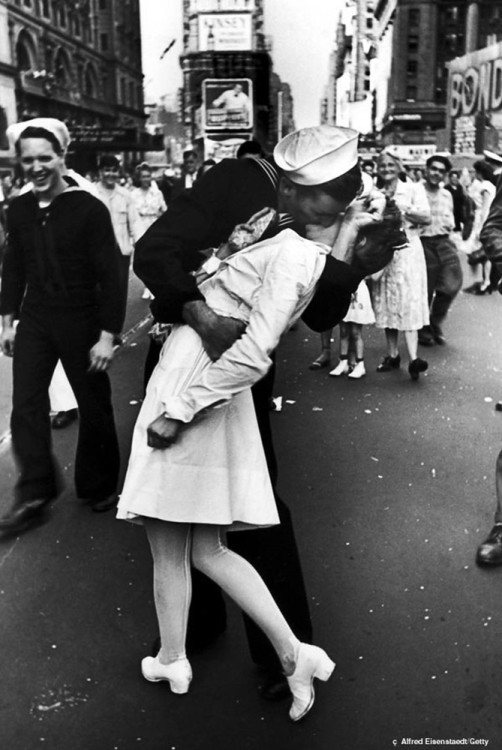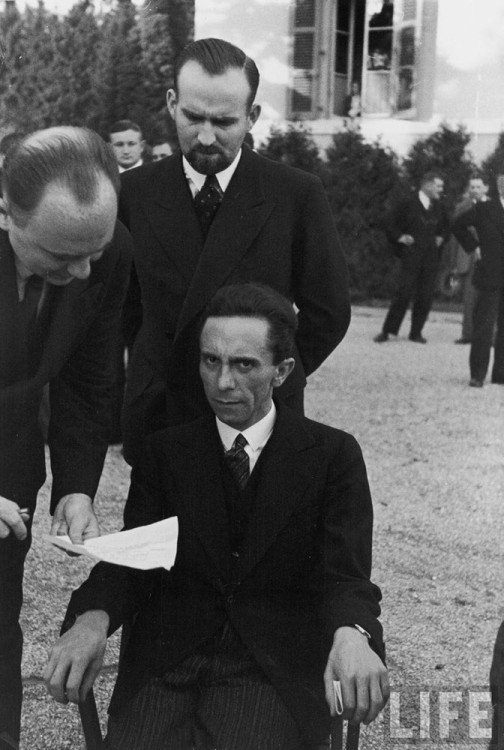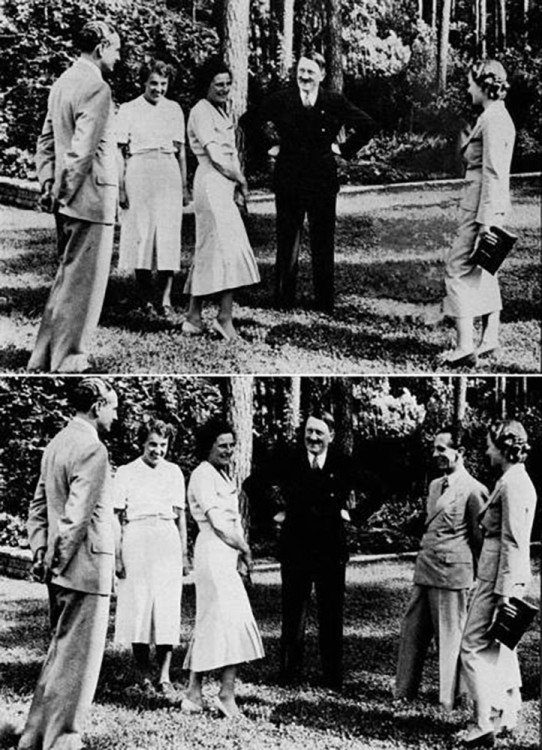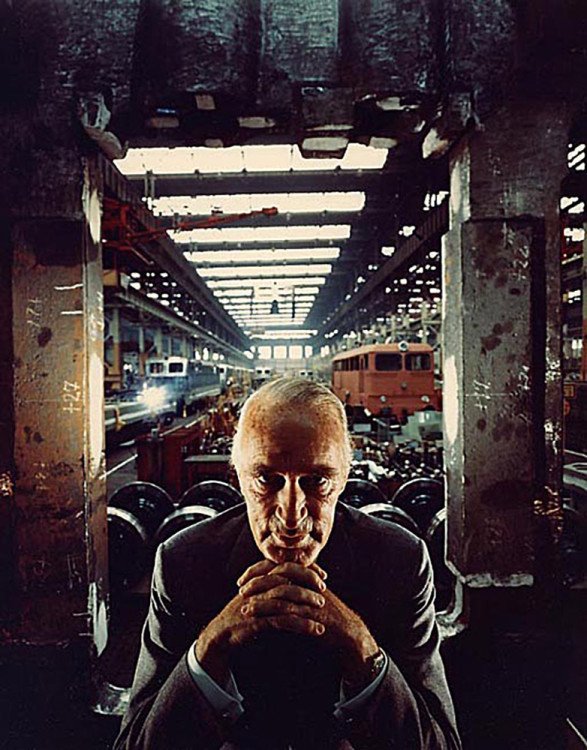Discussing: Alfred Eisenstaedt and Arnold Newman
We all have one thing(s) or another that may, or may not, hold us back from our goals. It could be stage fright, fear of spiders, being alone, being in crowds, certain people, or anything else. There’s no limit to our personal obstacles. Through the use of self-reflection in a class project called “Facing Fear,” I used this as an opportunity to get former students to think about the camera on a personal level. They had to identify two things, either physical or emotional, and come up with a way to use the photographic process to ideally overcome the fear.
With a project like this, context is helpful. Luckily, there have been numerous instances of facing fear in the history of photography. Some photography fields require photographers to step into war zones. Other fields are the interpersonal struggle of politics or etc. But no matter which, the utmost importance is learning how to deal with the inherent fears.

© Alfred Eisenstaedt
One photographer I like to point out is Alfred Eisenstaedt. He was born in Germany and fought for that country during WWI. An avid photographer while growing up, he began freelancing after the war and would eventually begin working for the AP. Most people know his work through the Times Square photo when the sailer kissed the nurse (he also, incidentally, makes a character cameo during the opening credits to the Watchmen film). But he had a portfolio much larger than that one famous image.
While still living in Germany, he photographed rising political figures of his country. In 1933 he made what is in my opinion one of his best image. He photographed Joseph Goebbels, the Nazi National Minister of Propaganda during World War II. Eisenstaedt was a German-born Jew, living in a country with boiling anti-Semitism. When he travelled to a League of Nations meeting in Geneva, his first image of Goebbels was from far away and isolated. It lacked the impact and awareness that physically being close with the camera could create. Goebbels knew of Eisenstaedt’s heritage, so when the photographer moved in closer to create an image of the propagandist surrounded by his officials, there was nothing amicable to be found.

© Alfred Eisenstaedt
Eisenstaedt described the interaction during the photograph: “He looked at me with hateful eyes and waited for me to wither. But I didn’t wither. If I have a camera in my hand, I don’t know fear.”
For this image, Eisenstaedt was in the heart of the lion’s den. He was facing a man who’d be intricate in the deaths of countless people. And yet, he stepped up to take the photograph anyway. Two years later, Eisenstaedt would emigrate to the United States amidst growing Nazi targeting of the German Jews.

Incidentally, propaganda (a term not necessarily bad unto itself, but in the shadow of the Nazi usage, now has a negative connotation) was so powerful in the Nazi party, not even Goebbels was immune from it. Apparently, he offended Hitler at some point in time. Because of this, Hitler had Goebbels removed from a random group photo. I guess when you are playing hot potato with dynamite, everyone eventually gets a little charred.
Switching gears to another photograph. It, too, had Nazi origins. Arnold Newman was a prominent environmental portrait photographer. Over his career, he made portraits of Picasso, Marilyn Monroe, Reagan, and countless others. In 1963, Newsweek Magazine asked him to make a photograph of Alfried Krupp, a powerful businessman who directly profited during WWII by supplying weapons to the Nazis. He utilized slave labor, primarily Jews. When they could no longer work, Krupp had them shipped to Auschwitz. After the war, he was tried and convicted for crimes against humanity, but only served three years before being pardoned.
At first, Newman did not want to take the photo. He said if there was anyone he’d want to stick a knife in, this would be the man. He said he was the devil. Newsweek agreed, but still wanted the photograph. Krupp’s people did not want Newman, a Jew, to take the photograph but Newman’s portfolio was shown to Krupp himself, who thought the images were lovely.

© Arnold Newman
For the photograph, Newman positioned Krupp high above his factory, similar to a leader overlooking his kingdom. Then, Arnold decided to try a lighting variation. He didn’t want to do the expected, lighting him from beneath with monster shadows. Instead, he set a light on each side of Krupp and pointed them back at each other, a setup also known as symmetrical lighting. Finally, before the first click, he asked Krupp, “Can you kindly lean forward?” Krupp moved and rested his face on his hands. Suddenly, the lighting pattern came together. The hairs on Newman’s neck stood up as bracketed a series of shots of this moment, hoping one would turn out correct. After the photo shoot, he left. Krupp’s handlers never inspected the finished product.
Krupp was none too happy about the published photo, obviously. Newman had made the portrait he intended to make, and done so while in the middle of company who held views none too favorable to him or people like him. Despite’s Newman’s admission that Krupp was actually a very handsome man, Newman photographed him as the devil, the nature in which the photographer viewed him.
In both instances, the photographers were facing off against a powerful movement. The opinions of the Nazis were deeply rooted in the destruction of a large demographic of people. I do also stress that while the Nazis were German, not every German was a Nazi. Such a broad brush can’t be applied to everyone who loosely falls within categories. Bad people do bad things, yet they can also do good things. Good people are typically good, but they can also be bad. During this same time period in WWII, America had a form of concentration camps of its own (albeit under a different name) for Americans of Japanese origin.
Despite these instances described, remember that it doesn’t take something as large as a massacre of people to instill fear in someone. Fear is not prejudiced in how or why it attacks. It can be caused by an otherwise routine activity gone askew in one instance. But that doesn’t mean it can’t be overcome. Learning to understand fear, overcoming it, or even accepting it, is a great accomplishment in life. Using the tools of your craft as a security blanket in your journey is a great way to go about it.
I enjoyed reading your article. Nothing gives me quite the chills like the act of defiance. "If I have a camera in my hand, I don’t know fear."- it's a brilliant quote I'll carry with me for some time, so thanks.
Thanks! I enjoy making photographs, but the former photo professor in me also loves just chatting about the medium or the history it exists in!